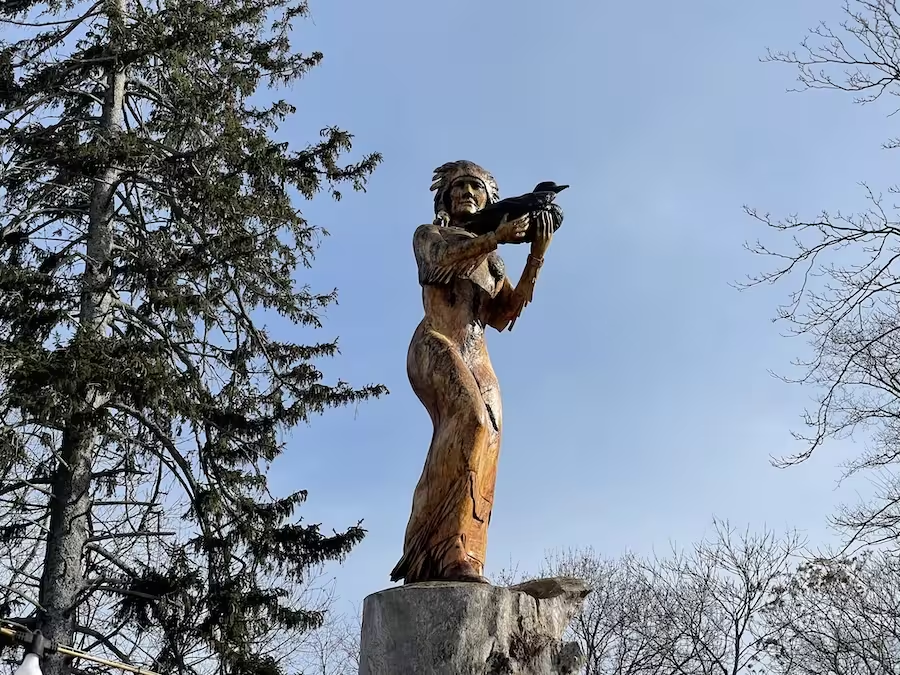For years, the towering 32-foot statue of Tuskawanta, the Lady of the Lake, has stood watch over the waters of Lake Ronkonkoma. A work of art and passion, this wood carving by sculptor Todd Arnett captured the imagination of passersby with its intricate details and connection to the haunting legend of the lake. But today, this beloved icon has taken on a new identity, as the statue—now missing its arms and the bird it once held—has drawn comparisons to the armless beauty of the Venus de Milo.
The Loss of a Local Treasure
The statue, carved from a massive European copper beech tree on the property of Virginia Schutte, was damaged recently due to wood rot. Pieces of Tuskawanta, including her arms and the cormorant she once cradled, have fallen away. After standing proudly for years, her benefactors are not looking to repair the sculpture on their own, citing the natural deterioration of the wood.
Visitors still flock to see her, and the carving’s new form seems to echo the lake’s own enigmatic beauty and sorrowful legend.
“It’s heartbreaking, but also part of her story now,” one passerby said who wished to remain anonymous.

A Legend Comes to Life
Tuskawanta’s story is deeply tied to the lore of Lake Ronkonkoma, Long Island’s largest freshwater lake. The lake’s haunting mythology tells of a Native American princess who tragically drowned and is said to take the life of one boy each year in search of her lost love. One popular version of the tale, known as the Birdsall Legend, recounts how Tuskawanta fell in love with a settler named Hugh Birdsall. Forbidden to be together, she sent messages to him via bark that floated through underground waters. After seven years, overcome by heartbreak, she paddled to the center of the lake and perished. Her canoe, carrying her lifeless body, floated to Birdsall’s home, where he joined her, and together they were carried out to sea.
The carving, created to represent Tuskawanta, became a physical embodiment of this tale. Arnett, a sculptor inspired by nature and spirituality, spent four years crafting the statue, consulting with historians and drawing on his connection to the lake’s history. The cormorant in her hands, a bird associated with water and transformation, symbolized her eternal connection to the lake and her quest for love.
Though the statue originally aimed to appease the curse of the Lady of the Lake, it quickly became more than a representation of the legend. And for many, the statue succeeded in doing just that, drawing visitors eager to marvel at her beauty and the story behind it.

The Legacy of Tuskawanta
Now, even in her altered state, Tuskawanta continues to capture hearts. Her resemblance to the Venus de Milo adds a new layer to her legend, emphasizing the enduring beauty of art, even when time takes its toll.

Lake Ronkonkoma itself remains shrouded in mystery, with tales of underwater tunnels, unexplained water levels, and its haunting curse. But amidst these uncertainties, the Lady of the Lake still stands as a poignant reminder of love, loss, and the timeless allure of myth.

Photos: Lon S. Cohen.




